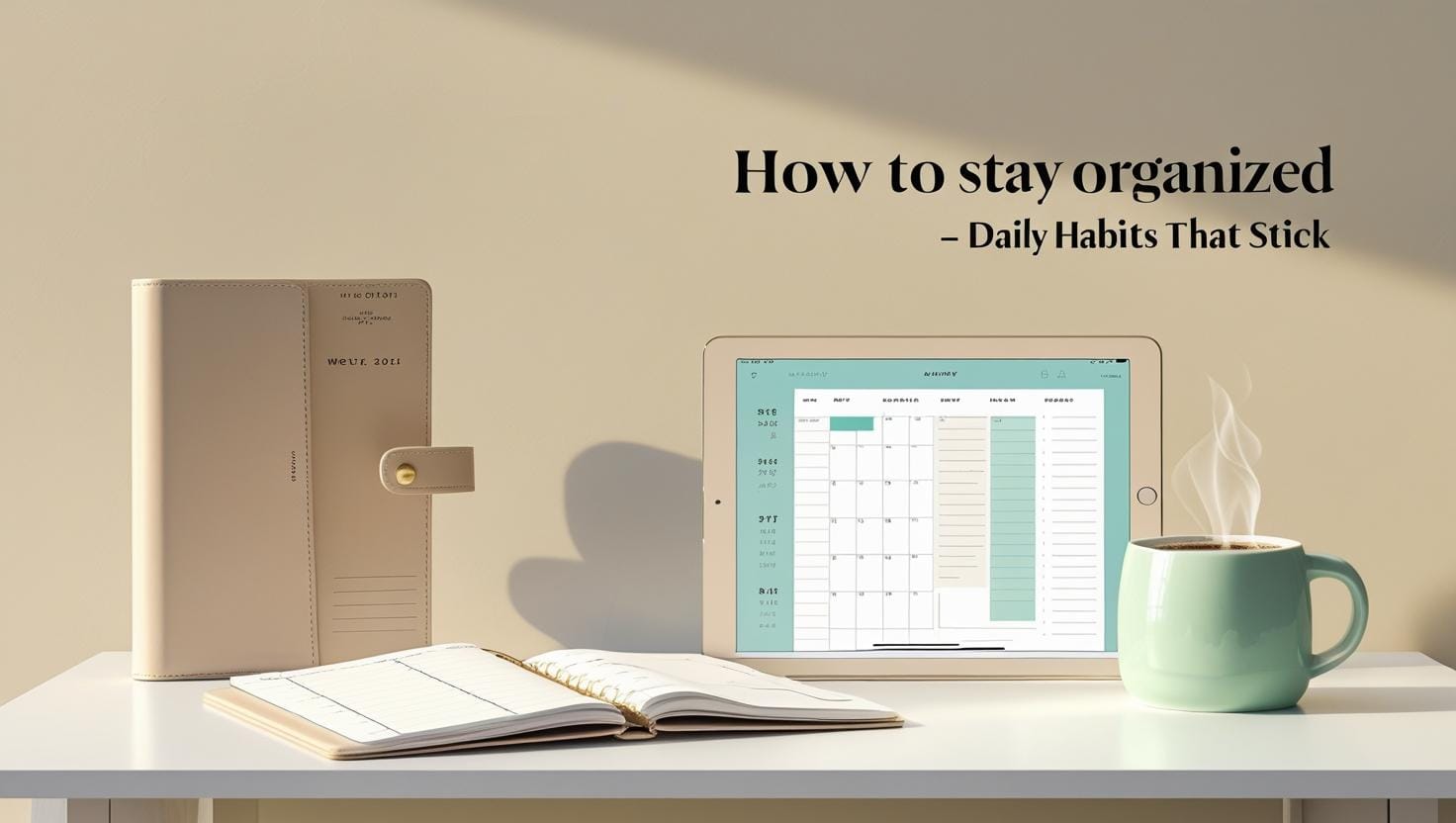How to Stay Organized: A Practical Guide to Reclaiming Your Time and Space
Feeling overwhelmed by clutter and a never-ending to-do list? This guide moves beyond simple tips to help you build a sustainable system for organization that works for your life, not against it.

Organization isn’t a personality trait you’re born with; it’s a skill you learn and a system you build. In a world that constantly pulls for our attention, creating order out of chaos is one of the most powerful forms of self-care. It reduces stress, boosts productivity, and frees up mental and physical space so you can focus on what truly matters.
But let’s be honest: generic advice like “just declutter” often fails. Why? Because it ignores the most crucial element—you. A truly effective organization system must be tailored to your unique challenges, whether you struggle with digital chaos, physical clutter, or managing your time. This guide will walk you through foundational principles and help you create a personalized action plan.
The Core Principle: The ‘Everything Has a Home’ Philosophy
This is the bedrock of all organization. Every single item you own, from your car keys to a digital file, should have a designated, logical place to live. When you’re finished using something, it doesn’t just get put down; it gets put away in its home. Clutter is simply the result of postponed decisions. By deciding on a home for everything upfront, you eliminate the need for future decision-making, which is what drains our mental energy.
The Four Pillars of a Well-Organized Life
We can break down the overwhelming concept of “getting organized” into four manageable pillars. Focus on building habits in each of these areas, and you’ll create a powerful, holistic system.
-
Pillar 1: Taming Your Physical Space
Your environment has a profound impact on your mental state. A cluttered space leads to a cluttered mind. Start with a methodical approach:
- The 4-Box Method: When decluttering any area (a closet, a desk, a room), use four boxes: Keep, Donate/Sell, Trash, and Relocate. Touch every item once and make an immediate decision. “Relocate” is for items that have a home but are in the wrong place.
- Work in Zones: Don’t try to organize your entire house in one weekend. That’s a recipe for burnout. Dedicate this Saturday morning to the kitchen counter, next week to your closet. Small, consistent wins build momentum.
- One In, One Out Rule: To maintain order, adopt this simple rule. For every new item you bring into your home (like a new shirt or book), an old one must leave. This prevents the slow accumulation of clutter.
-
Pillar 2: Mastering Your Digital World
Digital clutter can be just as stressful as physical clutter. A desktop full of random files and an overflowing inbox are major sources of anxiety. Apply the same principles to your digital life:
- Inbox Zero Philosophy: Treat your email inbox like a temporary processing station, not a permanent to-do list. At the end of each day, aim to have it empty by acting on every email: Delete, Delegate, Respond (if it takes <2 mins), or Defer (move to a task list or calendar).
- A Simple File Structure: Create a logical, top-level folder system for your documents (e.g., ‘Work’, ‘Personal’, ‘Finances’, ‘Projects’). Be consistent with naming conventions (e.g., ‘YYYY-MM-DD_ProjectName_DocumentType.pdf’).
- Consolidate Your Notes: Are you using sticky notes, a paper notebook, and three different note-taking apps? Choose one centralized digital tool (like Notion, Evernote, or Apple Notes) to be your “second brain.”
-
Pillar 3: Commanding Your Time & Tasks
Being organized isn’t just about space; it’s about effectively managing your most finite resource: time. This is where you move from passive organization to active productivity.
- The Eisenhower Matrix: A powerful decision-making tool. Categorize every task on your to-do list into one of four quadrants: Urgent/Important (Do it now), Not Urgent/Important (Schedule it), Urgent/Not Important (Delegate it), and Not Urgent/Not Important (Delete it).
- Time Blocking: Instead of a simple to-do list, schedule your tasks directly onto your calendar. Assign realistic blocks of time for specific activities. This forces you to confront the reality of how much time you actually have.
- The 2-Minute Rule: Coined by productivity expert David Allen, the rule is simple: If a task appears that you can complete in two minutes or less, do it immediately. It takes longer to defer it than to just get it done.
-
Pillar 4: Building Sustainable Habits
A system is useless without the habits to maintain it. The key is to make organization an automatic, low-effort part of your daily routine.
- The Evening Reset: Spend just 15 minutes every evening resetting your space. Put things back in their homes, wipe down counters, and plan your top 3 priorities for the next day. This “closing ceremony” prevents chaos from spilling into the next morning.
- Habit Stacking: Link a new organizational habit to an existing one. For example, “After I finish my morning coffee (existing habit), I will spend 5 minutes processing my email inbox (new habit).”
- Review Weekly: Dedicate 30 minutes every Sunday to a weekly review. Tidy your digital and physical desktops, review your calendar and task list for the upcoming week, and assess what worked and what didn’t. This is your strategic check-in with your organizational system.
Create Your Personalized Action Plan
Answer two simple questions to get a focused, actionable first step based on your biggest challenge.
Conclusion: Organization is a Journey, Not a Destination
The goal of organization is not to create a sterile, perfect environment. It’s to create a system that reduces friction in your daily life, allowing you to live and work more freely. Start small, celebrate your wins, and be kind to yourself. You are not “disorganized”; you are simply in the process of building your system. By choosing one area, applying a core principle, and sticking with it, you’ll begin a rewarding journey towards a more orderly and peaceful life.
